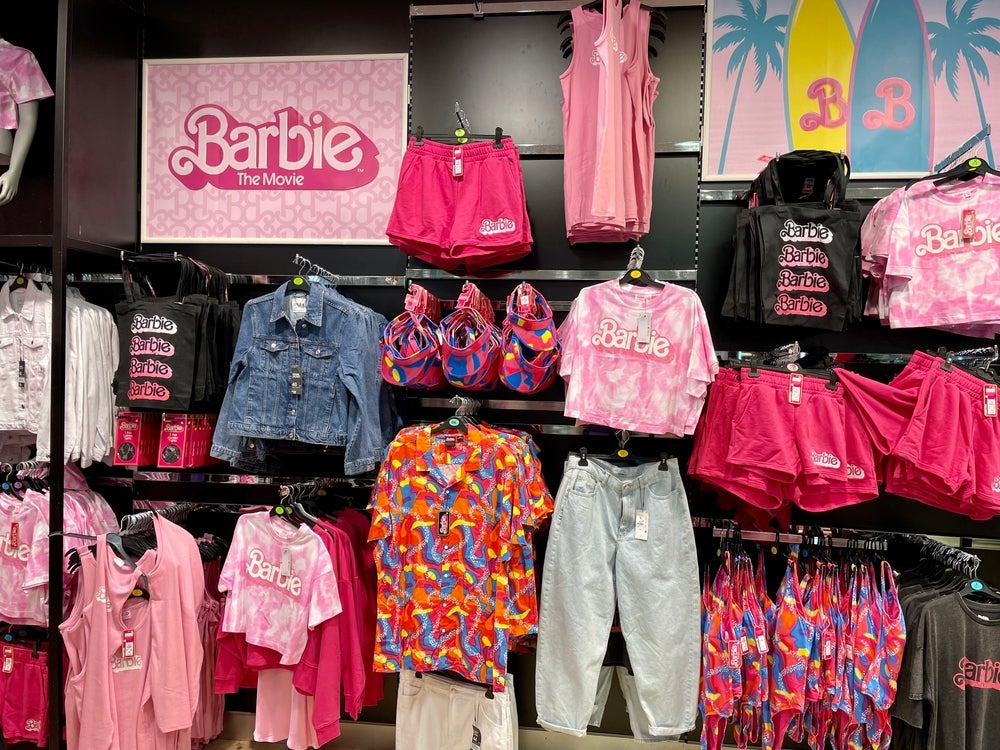
No one can deny that the fashion industry is now operating in a multi-channel world. But when it comes to managing this approach, it seems there is no unanimity of best practice – and often no best practice at all – on the three key issues of multi-channel pricing, sourcing and stock control. Malcolm Newbery unravels some of the complexities.
The three key challenges to operating successfully in a multichannel world are:
- Dealing with different customers buying through different channels, and in particular how to deal with garment pricing?
- Sourcing and dealing with potentially different suppliers for the different consumer offers made?
- Dealing with stock control: quite simply, where, how and by whom?
Multi-channel pricing
What exactly is the issue with multi-channel pricing in the fashion industry? It seems to me that it represents a fundamental collapse of the traditional notion that everyone, everywhere, should pay the same price for the same product. That notion was founded on the four traditional fashion industry ideas that:
- A brand would charge the same wholesale price to all of its retail customers, even if some of them were given preferential terms.
- Its retail customers would abide by RRP (recommended retail price) “suggestions” from the brand, and ask the consumer to pay the RRP.
- So, as a consequence, retailers selling brands would all sell at the same retail ticket price.
- And an own label retailer would sell at the same price to all of its customers, regardless of whether they were purchasing in store, on the retailer’s website or on social media.
The first and second ideas survive, sort of.
See Also:
Most brands have a standard price list. It is shown to prospective retail customers at trade fairs at which the brand traditionally sold forward. Every retail customer is offered the same wholesale price, although key accounts may be offered discounts or favourable payment terms. So even this is not a totally rigid system.
How well do you really know your competitors?
Access the most comprehensive Company Profiles on the market, powered by GlobalData. Save hours of research. Gain competitive edge.

Thank you!
Your download email will arrive shortly
Not ready to buy yet? Download a free sample
We are confident about the unique quality of our Company Profiles. However, we want you to make the most beneficial decision for your business, so we offer a free sample that you can download by submitting the below form
By GlobalDataBut most substantial brands also sell through their own retail stores. This means that before a wholesale price is set, there has to be a discussion between the wholesale and retail divisions of the brand about what price the garment will be sold in the brand’s own shops. For example, consider a major international wholesale sports brand selling trainers at GBP40. It may have decided with its retail division that retail will sell at a mark-up of x3, namely a price on the ticket of GBP120.
It then approaches its other customers, starting with the department store stocking the brand directly across the street from the brand’s flagship store. It tells the department store that the wholesale price is GBP40 (forget for this explanation discounts or payment terms negotiations) and suggests that the department store should sell for GBP120. The argument put to the department store is that it will look silly if the same trainer is on sale in the department store and in the brand’s flagship across the road at two different prices. If the department store price is higher, they will not sell any. Consumers use price comparison sites. If the department store price is lower, the sports brand will be angry. The department store agrees.
The sports brand then approaches all of its small independent sports retailers. They accept the RRP (recommended retail price) of GBP120, because they are small and the brand is big. The brand then approaches a large chain of retail sports shops, and suggests the same thing. The chain agrees because it does not wish to offend the brand, but may well discount (make special marketing offers) later in the season if the trainers are not selling well.
Finally the brand approaches some of Europe’s biggest sports chains (think Decathlon in France, or Sports Direct in UK). The pitch is the same. Sell at GBP120 RRP. The retailers say they will. But they do not mean it because they are discounters. They are prepared to sacrifice gross margin to drive volume sales. And there is nothing that the brand can do about it, except refuse to supply them.
And finally, the fourth idea, that own label retailers sell at the same price to every consumer. It works in physical bricks and mortar shops. Zara and H&M sell at the same price on the ticket in different countries, even though the sales tax (VAT, TVA, IVA is different in different European countries). They do this to avoid competing against themselves. But the moment they offer a different price on the internet to the price in the stores, they are wide open to consumer cherry-picking. No wonder price comparison websites flourish.
I have a brand client that sells wholesale and through its own retail, and on the internet as well (most do these days). It sells the same garment:
- Wholesale to small independents at GBP40, who will sell at GBP120 (mark-up of 3).
- Wholesale to department stores at GBP38, who will sell at GBP120 (mark-up of 3.2).
- Wholesale to multiple chains at GBP37, who will sell at GBP115 (mark-up of 3.1).
- Retail in its own shops at GBP120, (mark-up of 3).
- Retail on its own website at GBP110, (mark-up of 2.75), because it avoids certain retail overheads.
- Retail on other big websites at GBP105 (based on an agreed negotiation to benefit from the power of the customer’s website, and hence accepting a lower mark-up of 2.6).
- Retail on social media at GBP108 (based on my client’s suggested price, delivering a mark-up of 2.7)
If I am a savvy and picky consumer I have the advantage of using price comparison websites, so what am I going to do, and where am I going to shop?
And if I am my client, I have a complex weighted average set of:
- Wholesale margins with three different wholesale selling prices;
- Retail margins with four different retail selling prices.
I can write a sales plan, but I do not know how much I am going to sell through each channel. Consequently, I have only a vague idea of what my overall budget wholesale and retail gross margin is. Welcome to the world of multi-channel pricing!
Multi-channel sourcing
The complexities of multi-channel sourcing are driven by the complexities of multi-channel selling. Both can be looked at as a mixture of:
- Different distribution business methods.
- Different sourcing business methods.
- Where the stock is held.
- Whether the stock is a “common pot” or separated into sealed silos.
We will look more closely at the second point.
The effect of different selling methods on sourcing
In a similar way to the example in the pricing section above, I am using as an example one of my clients who offers prospective customers the seven different approaches outlined above. Each has different implications for sourcing, the choice of supplier and the lead times involved. Each is discussed in turn in the context of a spring/summer season.
1: Wholesale forward order. My brand client is taking customer orders in August/September for delivery from its manufacturer next January, and then from the brand to the retail customer next February.
- If lead times are short it will be possible to work “back-to-back” (take all the retail customer orders first, then place fabric and garment orders). This minimises the stock risk.
- If lead times are longer, it may be necessary to place fabric orders speculatively (on a sales forecast), whilst garment orders are still on the back-to-back method.
- If lead times are really long, both fabrics and garments will have to be ordered on a sales forecast, before my client has received the customer orders.
2: Wholesale ex-stock delivery. My client takes short orders in-season. Fabric and garment orders are based on a sales forecast. But there are tangible benefits in using a short lead time supplier from Turkey or North Africa instead of long lead time suppliers in the Far East. The result is either lower margins or a mixed dual sourcing approach.
3: Retail to consumer in my client’s own shops. The consumers will not see the garments until at least next February. So the same three potential permutations apply as in method one above.
4: Retail to consumer from my client’s own website. The garments will be loaded onto the website whenever they arrive. So longer lead time, higher margin suppliers are a valid option.
5: Retail to consumer on other websites, but stocked by them. This is the same situation as method four, unless the other website is very demanding on delivery times and short lead times.
6: Retail to consumer on other websites, but stocked by my client. The other website may demand earlier deliveries and shorter lead times than my client accepts under method four.
7: As concessions in department stores. My client has to have stock in the department store, otherwise he will lose the concession. The department store says when it wants the concession to function but does not determine the garments that will be stocked. Any of the methods above might be required.
The use of multi-channel selling methods has vastly complicated the sourcing processes. Welcome to the world of multi-channel sourcing!
Multi-channel stock control
My client now has stock held in four different physical places and in a mix of seven different location and “ownership” states. They are:
- In our warehouse, ready to distribute to forward order customers.
- In our warehouse waiting for customer short or ex stock orders.
- In our shops after we have allocated from our warehouse.
- In our warehouse awaiting consumer orders.
- In other websites’ warehouses.
- In our warehouse but “belonging” to the other website.
- In the department store, but “belonging” to us.
In this complex situation, we have to decide whether the stock is a “common pot” or separated into sealed silos. This is the ultimate and extremely difficult stock management decision. A common pot demands some measures of priorities, to cope with situations where there is not enough stock for all the customers. The priority determines who gets the stock first, if it is in short supply.
- Does it go to forward wholesale customers because they have placed orders? But then it is being sold at wholesale prices and we will make less money.
- Does it go to ex-stock wholesale customers? Same problem of profit, and they ordered late as well.
- Do we give it to our own shops? That way we may make the best margin.
- Do we give it to consumers who have ordered on our website?
- Do we keep the other websites well stocked, but possibly at our expense?
- Do we give priority to orders coming from other websites, but where the fulfilment (delivery) comes from us?
- Do we keep the concessions fully stocked, because they will be angry if we do not?
The alternative is the sealed silo system. Every distribution method has its own stock. At worst that could be seven different stock piles, almost all based on sales forecasts with the likelihood of over and under stocks everywhere. Welcome to the world of multi-channel stock control!







